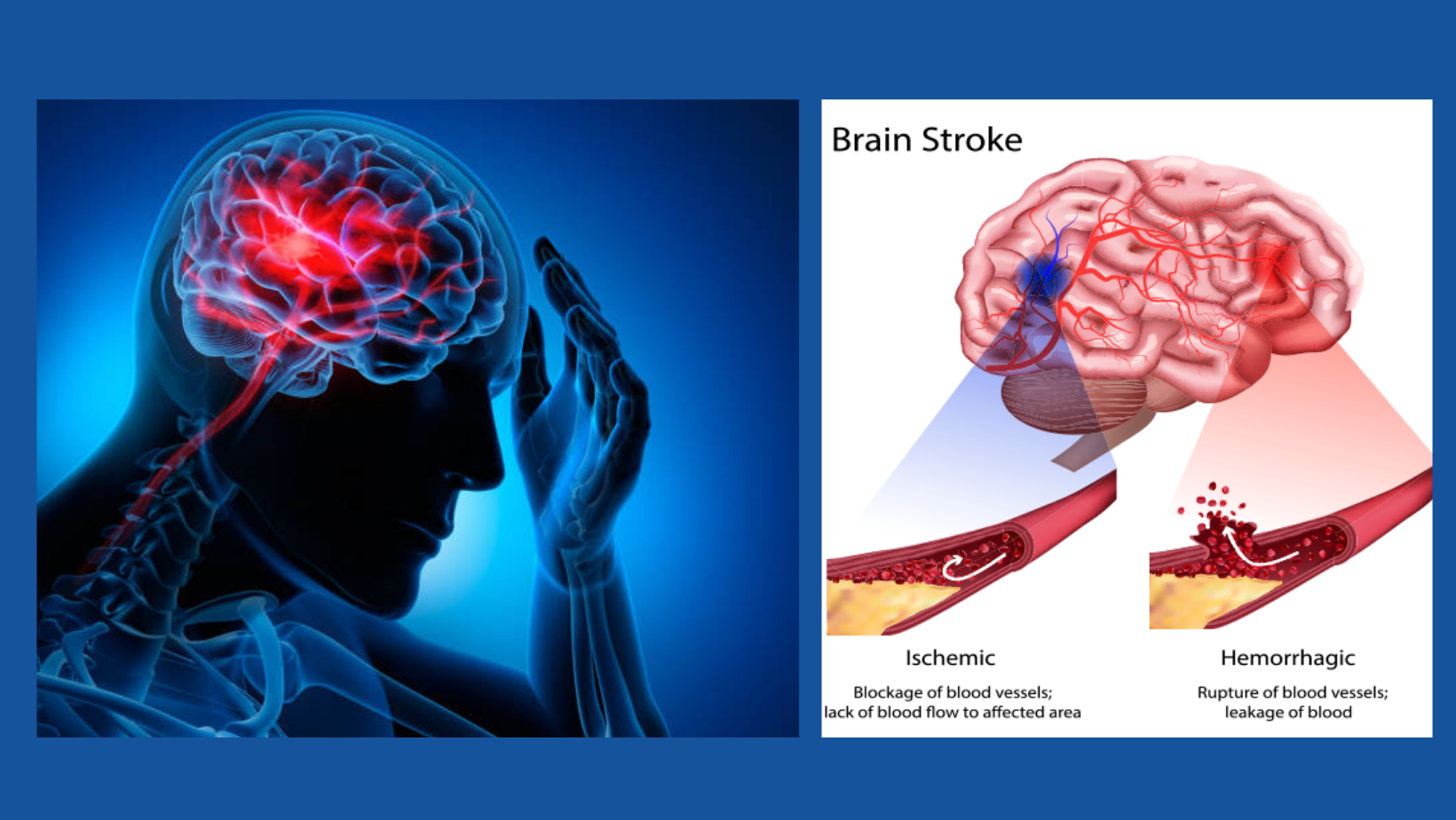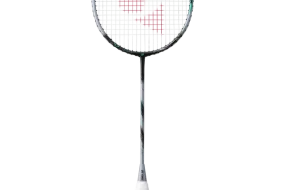
What is brain stroke’
When a region of the brain loses blood flow and ceases working, it is called a stroke. When a region of the brain loses blood flow and ceases working, it is called a stroke. This causes the bodily component controlled by the damaged brain to stop operating. A stroke is sometimes known as a “brain assault” or a “cerebrovascular accident
You’ll learn all you need to know about stroke in this article.
A reduction or blockage in the brain’s blood flow causes a stroke. A person who has had a stroke need rapid medical attention.
Strokes can be classified into three categories:
The most frequent kind of stroke, accounting for 87 percent of all occurrences, is ischemic stroke. A blood clot blocks the flow of blood and oxygen to a part of the brain.
When a blood artery ruptures, a hemorrhagic stroke ensues. Aneurysms or arteriovenous malformations are the most common causes (AVMs).
A transient ischemic attack (TIA) happens when blood supply to a region of the brain is cut off for a short time. After a short period of time, normal blood flow returns, and the symptoms go away without therapy. This is referred to as a ministroke by some.
Treatment
Ischemic and hemorrhagic strokes are treated differently since they have distinct origins and effects on the body.
Rapid diagnosis is critical for minimizing brain damage and allowing the doctor to treat the stroke with the most appropriate treatment approach for the kind.
The sections below go through the different treatment options for ischemic and hemorrhagic strokes, as well as some general stroke rehabilitation advice.
Ischemic stroke is a kind of ischemic stroke.
Ischemic stroke develops when arteries become blocked or constricted. The focus of treatment is usually on restoring sufficient blood supply to the brain.
The first step in treatment is to take medications that dissolve clots and prevent new ones from developing. A doctor may prescribe blood thinners such as aspirin or a tissue plasminogen activator injection (TPA).
TPA is an excellent clot-dissolving agent. However, the injection must be administered within 4.5 hours after the onset of stroke symptoms.
TPA can be injected directly into a brain artery or a catheter can be used to physically remove the clot in an emergency. The advantages of these treatments are still being researched.
Other treatments that surgeons can do to minimize the risk of strokes or transient ischemic attacks are available. For instance, a carotid endarterectomy entails opening the carotid artery and eliminating plaque that might rupture and go to the brain.
Angioplasty is another possibility. A catheter is used to inflate a tiny balloon within a constricted artery by a surgeon. They will then implant a mesh tube, also known as a stent, into the opening. This keeps the artery from narrowing any more.
Stroke with hemorrhage
A hemorrhagic stroke is caused by blood seeping into the brain. The goal of treatment is to stop the bleeding and relieve the pressure on the brain.
Taking medications to lower brain pressure and manage general blood pressure, as well as avoiding seizures and any abrupt blood vessel constriction, is frequently the first step in treatment.
Anticoagulants or antiplatelet medicines, such as warfarin or clopidogrel, can be used to counteract the effects of blood thinners.
Surgeons can fix some of the blood vessel abnormalities that have caused or might cause hemorrhagic strokes.
When a hemorrhagic stroke is caused by an aneurysm — a bulge in a blood artery that may rupture — a surgeon can block the blood flow and reduce the aneurysm by placing tiny clamps at the base of the aneurysm or filling it with detachable coils.
A surgeon can remove an AVM if the bleeding is caused by one. AVMs are blood vessels that link arteries and veins and are prone to hemorrhage.
Rehabilitation
Stroke is a potentially life-altering event with long-term physical and mental consequences.
Stroke rehabilitation frequently necessitates the use of specialized therapy and support systems, such as:
Speech therapy aids in the production and comprehension of speech. Communication may be made simpler via practice, relaxation, and a change in communication style.
Physical therapy can aid in the relearning of mobility and coordination. It is critical to keep active, even if it is tough at first.
Occupational therapy can aid in the improvement of a person’s ability to do everyday tasks such as bathing, cooking, dressing, eating, reading, and writing.
Support groups: Becoming a member of a support group can assist a person in coping with typical mental health concerns that might arise following a stroke, such as depression. Many people find it beneficial to share their shared experiences and information.
Support from friends and family: After a stroke, close friends and relatives should strive to provide practical assistance and consolation. It is critical to inform friends and family about what they can do to assist.
Stroke rehabilitation is a crucial and continuing element of the recovery process. Depending on the severity of the stroke, restoring a normal quality of life is typically achievable with the appropriate aid and the support of loved ones.
Prevention
Addressing the underlying causes is the most effective method to avoid a stroke. This can be accomplished by making adjustments to one’s lifestyle, such as:
consuming a nutritious diet
maintain a healthy weight
regular physical activity
avoiding tobacco use
avoiding alcohol or drinking just in moderation
A well-balanced diet should include lots of:
fruits
veggies
grains in their entirety
nuts
seeds
legumes
Limit the quantity of red and processed meat, as well as cholesterol and saturated fats, in your diet. Also, keep your salt consumption to a minimum to maintain a good blood pressure level.
Other steps a person might take to lower their stroke risk include:
keeping their blood pressure in check
diabetes management
undergoing heart disease therapy
Taking anticoagulant or antiplatelet medicines, in addition to adopting these lifestyle modifications, can lower the risk of future stroke.
Additional strokes can be reduced by undergoing cardiac artery, carotid artery, or brain aneurysm surgery, as well as several other surgical treatments that are still being researched.
Risk factors and their causes
Each type of stroke can be caused by a particular set of factors. Stroke, on the other hand, is more likely to strike someone who:
have obesity or are overweight
are at least 55 years old
have had a stroke in the past or have a family history of stroke
blood pressure is too high
suffer from diabetes
have a lot of cholesterol
having a vascular illness such as heart disease, carotid artery disease, or another type of vascular ailment
are they sedentary?
excessive alcohol consumption
smoke
ingest illegal substances
According to certain research, men have a greater chance of dying from a stroke than women. However, according to a 2016 assessment of studiesTrusted Source, these disparities do not account for adjustments for race, age, stroke severity, and other risk factors.
The research indicates that age and demographic factors, rather than biological differences between males and females, frequently raise the risk of stroke death.
According to a study published in 2016, According to Trusted Source, African Americans have a considerably greater chance of having their first stroke. They’re also 60 percent more likely to have another stroke in the next two years.
The parts that follow go into the causes of each type of stroke.
Ischemic stroke
This type of stroke occurs due to blockages or narrowing in the arteries that provide blood to the brain. This causes ischemia, or a severely reduced blood flow, which damages brain cells.
Blood clots often cause ischemic stroke. Clots can form in the brain arteries and other blood vessels in the body. The bloodstream carries these into narrower arteries in the brain.
Fatty plaque deposits within the arteries can also cause clots that result in ischemia
Stroke with hemorrhage
Hemorrhagic strokes are caused by leaky or ruptured arteries in the brain.
Leaking blood exerts pressure on brain cells, causing them to break down. It also decreases the amount of blood that may reach brain tissue following a bleed.
Blood veins in the brain or on the surface of the brain might burst, spilling blood into the brain. Blood may also enter the gap between the brain and the skull as a result of this.
Hypertension, physical trauma, blood-thinning medicines, and aneurysm are all factors that might cause a blood artery to leak or break.
Factors at Risk
Strokes can happen at any age, however they are more prevalent among the elderly. Understanding the variables that raise your risk of having a stroke and recognizing the signs can help you avoid having one. Getting a diagnosis and therapy as soon as possible will help you recover completely.
Stroke risk factors that can be controlled or treated include:
Smoking: If you stop smoking, you can lower your risk. If you take some types of oral contraceptives and smoke, your risk may be raised much more. Long-term secondhand smoke exposure has been linked to an increased risk of stroke, according to new research.
High blood pressure: The most important risk factor for stroke is a blood pressure of 140/90 mm Hg or above. There are typically no distinct symptoms or warning indications. That’s why it’s crucial to get your blood pressure tested on a regular basis. It’s critical to keep your blood pressure under control if you want to avoid a stroke.
Carotid artery disease or other arterial disease: The carotid arteries in your neck transport blood to your brain. A blood clot can obstruct a narrowing carotid artery caused by fatty deposits from atherosclerosis. Neurosurgeons treat carotid arteries using carotid endarterectomy, a surgery in which plaque is removed from the artery through a neck incision, or carotid artery angioplasty and stenting, an endovascular technique that does not need a surgical incision in the neck.
TIAs have a long and illustrious history. About 30% of strokes are preceded by one or more transient ischemic attacks (TIAs), which can happen days, weeks, or even months before the stroke.
Controlling your blood sugar, blood pressure, and cholesterol levels is critical if you have diabetes. Diabetes, especially if left untreated, increases your risk of stroke and has a slew of other significant health consequences.
High blood cholesterol: A high total cholesterol level (240 mg/dL or above) in the blood is a key risk factor for heart disease, which increases the risk of stroke. High levels of LDL (bad) cholesterol (more than 100 mg/dL) and triglycerides (blood fats, 150 mg/dL or higher) have been linked to an increased risk of stroke in patients who have had prior coronary heart disease, ischemic stroke, or transient ischemic attacks.Low HDL (good) cholesterol levels (below than 40 mg/dL) may also increase the risk of stroke. By reducing salt and saturated fat in your diet, you may frequently lower your cholesterol levels. However, some people are born with genes linked to high cholesterol levels. Even if they eat properly and exercise often, they may still have high cholesterol and require medicine to lower it.
Obesity and physical inactivity both raise the risk of high blood pressure, high cholesterol, diabetes, heart disease, and stroke. Stroke risk can be reduced by doing 30 minutes of moderate exercise five days a week. If you have any health issues or have been inactive, see your doctor before beginning any fitness regimen.
According to new study, persons who use hormone replacement therapy (HRT) have a 29 percent higher risk of stroke, namely ischemic stroke.
Treatment for Ischemic Stroke
The treatment for ischemic stroke aims to remove the blockage and restore blood flow to the brain. Tissue plasminogen activator (tPA) is the only FDA-approved treatment for ischemic stroke, and it must be taken within a three-hour window from the beginning of symptoms to be effective. Unfortunately, only 3-5% of stroke victims make it to the hospital in time to be evaluated for this treatment, and the actual usage of tPA is much lower. This drug increases the risk of cerebral bleeding and should not be used to treat hemorrhagic stroke.
Neurointerventional Procedures for Emergency Surgical Stroke Treatment
A tiny microcatheter supplied by a larger guiding catheter implanted through a small incision in the groin may be used in microcatheter-based surgical treatments for stroke. The microcatheter is guided to the location of blockage in the brain using a microguidewire. Thrombolytic medicine, such as tPA, can then be given directly to the thrombus that is occluding the blood vessel.This type of therapy, in which thrombolytic medicine is delivered intraarterially, is more specific than IV (intravenous) tPA and, as a result, may need much lower drug doses. The time it takes to put this sort of intervention in place is also substantially (twice) longer than it is for IV TPA. This sort of treatment is usually only available at Comprehensive Stroke Care Centers.
Devices for Retrieving Clots
The Merci Retriever is a corkscrew-shaped device that helps stroke victims remove blood clots from their arteries. It was authorized by the FDA in 2004. A tiny incision is made in the patient’s groin, and a little catheter is inserted into it until it reaches the neck arteries. A tiny catheter is inserted into the bigger catheter at the neck and directed through the arteries into the brain until it reaches the clot.A straight wire within the tiny catheter protrudes beyond the clot and twists into a corkscrew form automatically. The corkscrew spins and grabs the clot, pulling it back into the clot. A balloon is inflated in a neck artery, shutting off blood flow, allowing the device to safely remove the clot from the brain. A syringe is used to remove the clot from the catheter.
Penumbra is a microcatheter-based system device that works on the idea of aspiration. In 2008, the FDA gave it its approval.
The latest generation of embolectomy devices for stroke is the Stentriever. They’re still in the early stages of development, but they operate by breaking up the occluding clot with aspiration or withdrawal.




